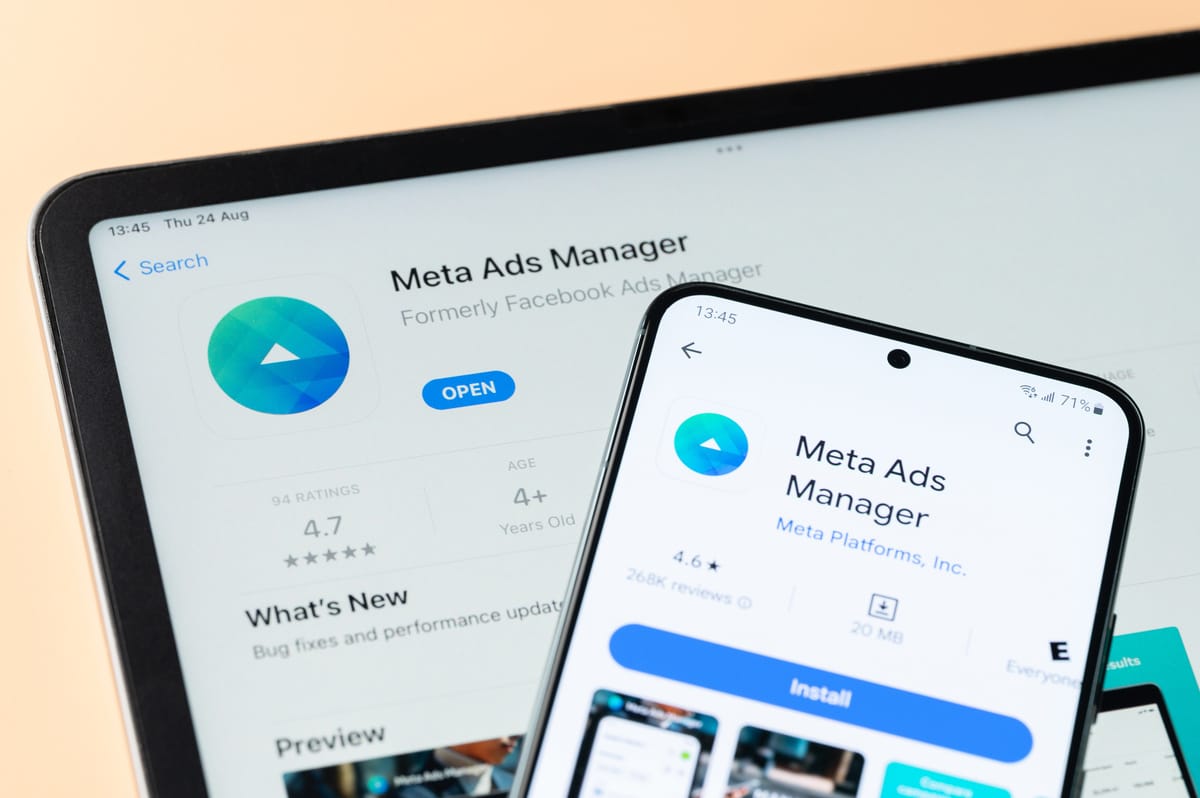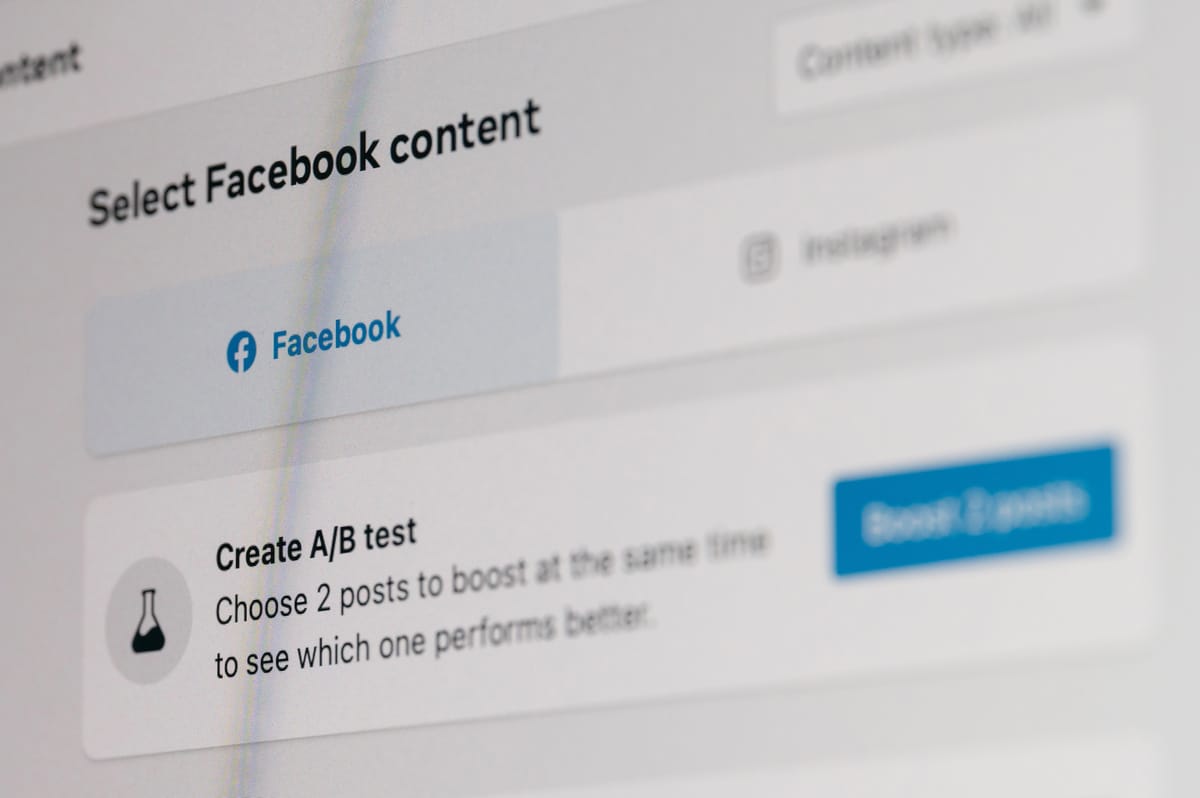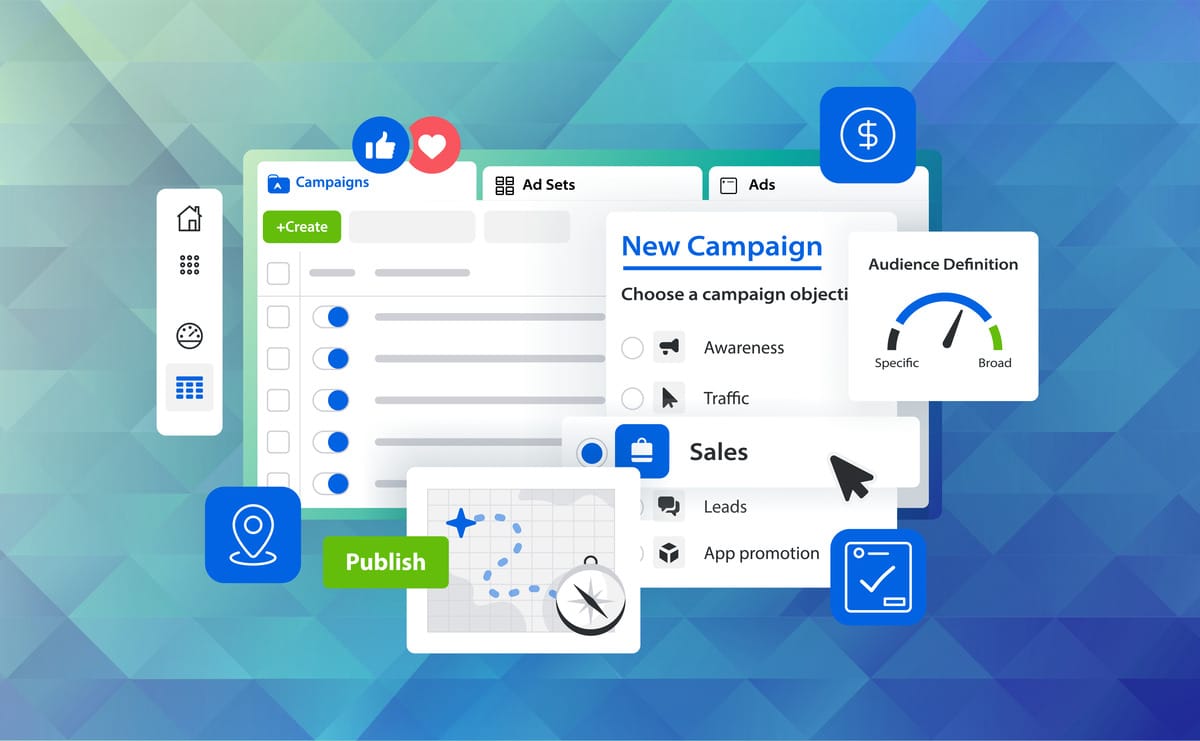How to Advertise Your Photography Business on Meta
Discover effective Meta advertising strategies for photographers in this comprehensive guide. From ad formats to optimisation, read up on strategies tailored specifically for photography businesses.

Advertising your photography business on Meta platforms, which includes Facebook and Instagram, is a crucial part of your marketing strategy. While there are common strategies that most photography businesses use, today we're going to go a bit deeper with unique insights and strategies that go beyond basic advertising advice. Let's see how you can leverage Meta's vast tools and user base to boost the leads coming to your photography business.
Basics of Meta Advertising for Photographers
Meta's advertising platform allows photographers to create tailored ads that can boost exposure and also effectively target potential clients across both Facebook and Instagram. These platforms use detailed targeting options based on demographics, interests, behaviours, and more.
Key Elements of Meta Advertising
- Ad Formats: There are a wide variety of ad formats such as single images, video ads, carousel ads, and Stories ads. Each format has unique benefits for visual content, making them particularly suited for photography. While single-image ads are straightforward and focus on one strong, video ads allow you to tell a story or demonstrate the context of your work more dynamically.
- Targeting: The precision of Meta’s targeting is its key strength! Photographers can target audiences based on specific interests like weddings, portraits, travel, and more. Layering these interests with demographic targeting ensures that ads are shown to the most relevant audience.
- Budgeting and Bidding: Setting a budget is very straightforward on Meta. You can opt for a daily or lifetime budget. The best part is the platform provides recommendations for bidding based on the goal of the ad, whether it's brand awareness, engagement, or conversions.
Then there are more advanced strategies you can try. Once you familiarise yourself with the basics of setting up ads, several advanced tactics can improve your ads' performance:
- Custom Audiences: Custom Audiences go beyond basic demographic and interest targeting. It allows you to retarget individuals who have previously interacted with your content or visited your website. This can dramatically increase conversion rates since it's targeting users who have already shown interest in your work.
- Lookalike Audiences: This is a powerful feature that can help you reach new people who are similar to your existing customers. As the name suggests, this feature analyses the traits of existing followers and past clients, allowing you to target new users with similar behaviours and interests.
- Creative Testing: We'll talk about monitoring and optimisation in a bit and this feature helps you do exactly that. By using A/B and split testing, you can compare different versions of ads to find the most effective elements of your campaigns. You can test various images, headlines, or call-to-action buttons to see what resonates best with your target audience.
- Placement Optimisation: For those who want to have more control, this feature lets you manually choose where your ads appear (e.g., Facebook News Feed, Instagram Stories, or Facebook Marketplace). However, automatic placements are often recommended as as they align the placement with the ad's visual and textual content.

Advertising Metrics for Photographers
Monitoring the performance of your advertising campaigns is crucial. Advertising is most effective when it's not a one-time effort. Meta provides detailed analytics that can help you understand which aspects of your ads are working and which are not.
Each metric such as reach, impressions, click-through rates, and conversion helps you assess the effectiveness of an ad and guide future strategies. What do these marketing metrics signify, and how should you interpret the data? Here’s a breakdown of everything you need to know:
- Reach: Reach measures the total number of unique users who have seen your ad or content. It’s a useful metric for understanding how widely your message is being seen.
How to Interpret and Improve: High reach is good if creating awareness around your services is your goal. If you see low reach, consider refining your audience selection in ad campaigns to ensure you're reaching people most likely to be interested in your content.
- Impressions: Impressions count the number of times your ad or content has been displayed, regardless of whether it was clicked or not. This can include multiple views by the same user.
How to Interpret and Improve: High impressions show that your content is being shown frequently, which can increase brand awareness. However, if impressions are high but clicks are low, it might suggest the content isn't strong enough to drive action. Since photography is a visual medium, ensure your ads and posts use high-quality images to grab attention.
- Click-Through Rates (CTR): CTR is the ratio of users who click on a specific link to the number of total users who view a webpage, email, or ad. It is a strong indicator of how encouraging your ad is for people to take a closer look.
How to Interpret and Improve: A high CTR means that your audience finds your ads relevant and enticing. If the CTR is low, it may be a sign to revise the ad copy, and the design, or to better target your ads.
- Conversion Rates: The conversion rate measures the percentage of users who have completed a desired action (like filling out a form, signing up for a newsletter, or making a purchase) divided by the total number of clicks.
How to Interpret and Improve: This is one of the most critical metrics as it shows the effectiveness of your campaign in driving an action! A low conversion rate might indicate that there is a disconnect between the ad and the landing page or that the user experience is lacking. Your landing page should be visually appealing and easy to navigate. Use clear and concise call-to-action (CTA) buttons, and ensure that the page loads quickly across all devices.

Advanced Meta Advertising Tips for Photographers
Facebook and Instagram Stories Polls
When was the last time you participated in a poll just to see the results? Well, we all do it from time to time! While many businesses use Stories for visibility, integrating polls within these stories can significantly increase engagement. Polls not only engage but can also double as your market research to better understand what your audience enjoys or expects from your photography business.
Augmented Reality (AR) Ads
AR ads on Facebook are still not as commonly used by photographers. These ads allow users to interact with your photography in a virtual space. You can perhaps let potential clients visualise themselves in one of your photoshoot settings. AR creates memorable, interactive experiences that can drive higher engagement rates. It also differentiates your services from others.
Targeting Niche Audiences
Facebook provides detailed targeting options that allow you to reach very specific audiences. For instance, targeting users who have recently engaged with wedding content if you’re a wedding photographer, or who are part of parenthood groups if your niche is in baby or newborn photography.
Lookalike Audiences Made Better
Did you know that you can leverage your existing client list to find new clients? Upload your client email list to Meta, and use it to find new users who share similar characteristics with your best existing clients. This method often results in higher conversion rates because the new audience has similar desires to your current happy clients.
However, it's crucial to ensure that your clients have given explicit consent for their data to be used for marketing purposes beyond your direct communication with them. Using client data without consent can violate privacy laws and damage trust between you and your clients!
Integrate User-Generated Content
Start capitalising on your reviews and testimonials! Share glowing reviews and testimonials directly in your ads. Social proof can be incredibly persuasive. Choose testimonials that speak directly to the benefits of your services. Highlight reviews that are detailed, mention specific advantages, and come from clients who mirror your target audience. This makes the testimonials relatable and credible to prospective customers!
With permission, use images of real clients in your advertising. This approach helps humanise your ads. Potential clients can see themselves in the photos, making the service you offer more relatable and desirable. Make sure to pair testimonials with a strong call to action that guides potential customers on what to do next.
Use Facebook Pixel
Install the Facebook Pixel on your website. It's helpful for retargeting visitors but more importantly, it’s helpful in understanding which ad formats and creative content drive traffic to your site. This data will come in handy when you're optimising your campaigns.
Experiment with Ad Formats
Showcase different aspects of your photography service with carousel ads. For wedding photographers, this could include various wedding scenes, portraits of the bride and the groom, or before-and-after shots of photo edits.
Despite their popularity, video ads are still underutilised by photographers. Create behind-the-scenes videos of photoshoots, or testimonials from clients post-shoot. With higher engagement rates, video ads can convey your personality and business ethos more effectively than static images.
Repurpose and Innovate
Try sharing photography tips or blog posts about photo session preparations, poses or any informational content that provides value beyond the standard sales pitch. Link these informative pieces in your ads to drive traffic to your website which would help you position yourself as an expert in the field.
Tailor your ads around holidays, seasons, and local events. For instance, advertise mini-session specials during the holiday season or offer special discounts for graduations in the spring.
Ready to Start Advertising on Meta?
Mastering Meta advertising for photographers is through understanding the basics of creating and launching an ad and also diving deep into advanced targeting options, creative testing, and ongoing performance analysis.
Remember to stay updated with Meta's evolving tools and continuously experiment and refine your strategies then you can effectively use Meta's platforms to grow your business and stand out in a competitive market. We hope the tips and strategies above give you a solid start to learning how to promote your photography using Facebook and Instagram!
What's next?
Enjoyed this guide? Then you might like the article Meta ad optimisation for photographers as well. If you like to read up on more photography marketing tips; browse our growing collection of articles on our blog containing useful tools, techniques, and best practices. Many of these insights come straight from the mouths of successful professional photographers!
If you're looking for a way to get more clients and run your business in a more optimal way, you might want to check out the Smiler Photographer Suite and see how it can improve your photography business. Sign up for free now and discover why photographers rave about it!

Get started for free now

